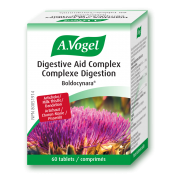If you’re like most of us, you make resolutions every year. You’ve kickstarted your healthy eating regime in eager anticipation of that future bikini body, but something isn’t right. You’ve been eating healthy, but you feel more bloated than ever! What on earth is going on? I’ll explain why 10 “healthy foods” could be causing you to bloat.
1. Apples
Apples are well known for being low in calories and are often a popular choice with dieters. However, you could be sabotaging your washboard tummy with that “apple a day.”
Apples are rich in fructose, which falls into the category of FODMAPs—or in the long form, Fermentable Oligo-, Di-, Mono-saccharides And Polyols. FODMAPs are specific types of indigestible carbohydrates that are broken down by bacteria in the large intestine. As bacteria metabolizes these compounds, they release gas. While it’s all quite normal, some people just don’t respond well to the process. It could be the result of a FODMAP intolerance, a gut bacteria imbalance, or perhaps another condition, such as IBS.
Regardless of exactly why it happens, some people need to give FODMAPs a wide berth as they find that they’re left feeling rather bloated and gassy. This is something to keep in mind if bloating is a common occurrence—paying attention to your symptoms after certain foods is key.
Simple Swap:
If apples aren’t working for you, try having a handful of berries as a healthy snack instead. Strawberries and raspberries are super nutritious and low in FODMAPs! And if you find you’re a little gassy or uncomfortable after certain foods, why not try Digestive Aid Complex – Boldocynara, a bitter herb remedy for the relief of indigestion and bloating.
2. Beans and pulses
Beans and pulses are super healthy and rich in fibre and minerals such as iron. However, these little guys are rich in another type of carbohydrate called galactooligosaccharides (GOS), which again fall into the FODMAP group.
Simple Swap:
To help avoid bloating, opt for canned varieties of pulses instead: some of the GOS content is thought to leach out into the surrounding liquid, which you then pour down the drain! Happier tummy time, here we come!
3. Broccoli
Broccoli is a popular vegetable among gym-goers, as it’s rich in beneficial compounds including sulforaphane. However, broccoli also contains fructans, another type of oligosaccharide that doesn’t get broken down until it reaches the large intestine. As a result, gas is produced, but for cruciferous vegetables, that gas is hydrogen sulphide, a particularly stinky variety, so you get a double whammy!
Simple Swap:
Why not try other green vegetables for a change? After all, variety is key to good health! Zucchini is extremely versatile and can be made into a tasty side dish.
4. Grapefruit
Grapefruit is often hailed as a superfood and has long been the subject of questionable claims about its ability to reduce fat. But could it be having some undesirable effects instead? Quite possibly! And why? You’ve guessed it: it contains a type of FODMAP, those pesky oligosaccharides. This citrus fruit doesn’t contain huge amounts of them, so you could get away with a small portion, but you might want to avoid the grapefruit diet if you think you’re particularly sensitive.
Simple Swap:
Why not replace a wedge or two of grapefruit with orange instead? Oranges are lower in FODMAPs and should leave your digestive system feeling a bit happier.
5. Onions
Onions are a basic ingredient in many healthy recipes. After all, they add a nice flavour to dishes and are nutritious. But onions contain a compound called fructooligosaccharides (FOS), which are often regarded as beneficial as they act as prebiotics. Prebiotics basically support the bacteria in your gut by acting as a food source for them. However, as we know, as bacteria feed, they produce gas, which we suspect is further complicated if you have an imbalance of bacteria in your gut—and the bad bacteria tend to produce even more gas than the good ones!
Simple Swap:
Why not experiment with some different FODMAP-free veggies as the base of some of your dishes in the kitchen, for example, beansprouts or some grated carrot.
6. Dried fruit
Fruit leather is all the rage in health food stores and people assume that it’s the perfect snack. While it can be a nutritious option and a nice addition to a healthy balanced diet, it’s particularly high in the so-called “fruit sugar” fructose. Some people are thought to suffer from fructose malabsorption and, as a result, flare-ups in symptoms can occur.
Simple Swap:
Opt for fresh fruit options instead—try a handful of berries or a banana—because they contain less fructose.
7. Melon
Melon, including the ever-popular watermelon, may no longer be your go-to fruit once you consider the fructose content. Much like dried fruit, it’s pretty high.
Simple Swap:
Go for other refreshing options instead, such as kiwi fruit or juicy pineapple chunks.
8. Fruit juice
It’s been drilled into us that fruit and fruit juices are super healthy, but juice, and the concentrated kind in particular, can be problematic because they’re super high in fructose. Some people may be able to tolerate larger amounts of fructose, but for others, it isn’t well absorbed and can wreak havoc in your gut.
Simple Swap:
Swap overly sweet fruit juices for some hot water with lemon. Lemon slices are well tolerated by most, have a refreshing taste and are packed full of vitamin C.
9. Cashews
Nuts are a great part of any diet because they’re a great source of protein and healthy fats. But you might want to watch how you respond to certain types. Cashews, and a couple of others including pistachios, have a higher proportion of carbohydrates and can be problematic for some people.
Simple Swap:
Why not try some seeds instead of your normal handful of nuts. Pumpkin and sunflower seeds are super nutritious and low in FODMAPs.
10. “Diet” drinks
People so often assume that because diet drinks are low in calories that they contribute to a healthy diet, but sadly this just isn’t the case. First, they’re full of carbon dioxide, which can easily become trapped in your digestive tract, causing flatulence. Second, artificial sweeteners are high in a compound called polyols, which aren’t broken down and absorbed before they reach the large intestine, and we know what this means: more gas! Finally, artificial sweeteners are thought to potentially upset blood sugar balance and insulin responses, which in the long run can lead to weight gain! Doesn’t really seem worth it now, does it?
Simple Swap:
Good old H2O! Water is so underrated—it’s essential for all bodily functions, as well as weight loss. It helps get your bowels moving, helps clear toxins out your body, and keeps everything working right. If you’re dehydrated, you’re more likely to suffer from water retention as your body desperately tries to cling to every drop it finds. So, to keep feeling at your leanest, make sure to drink 1.5 litres of plain, still water every day.





